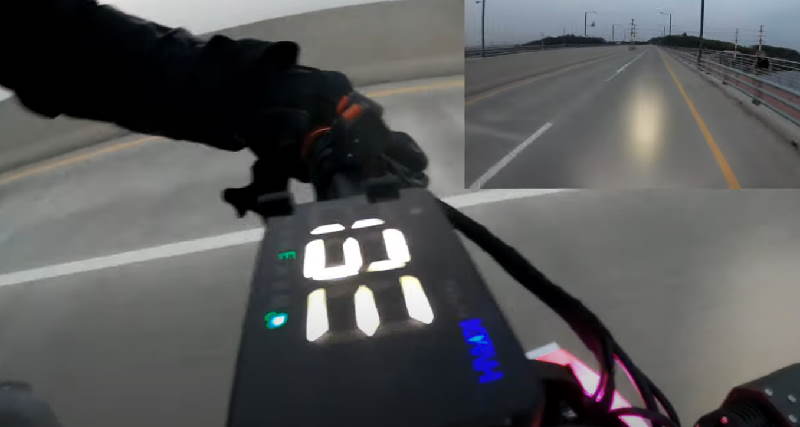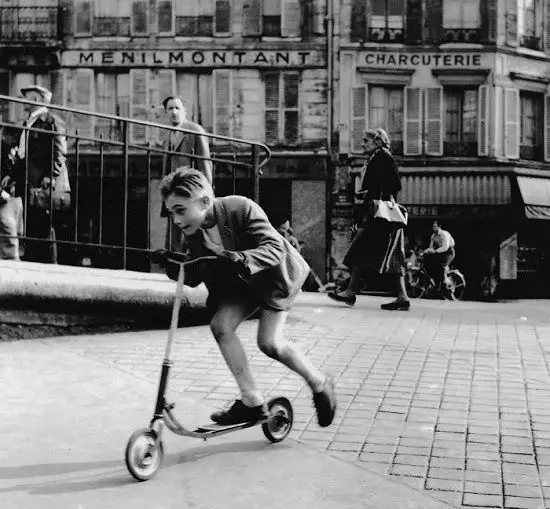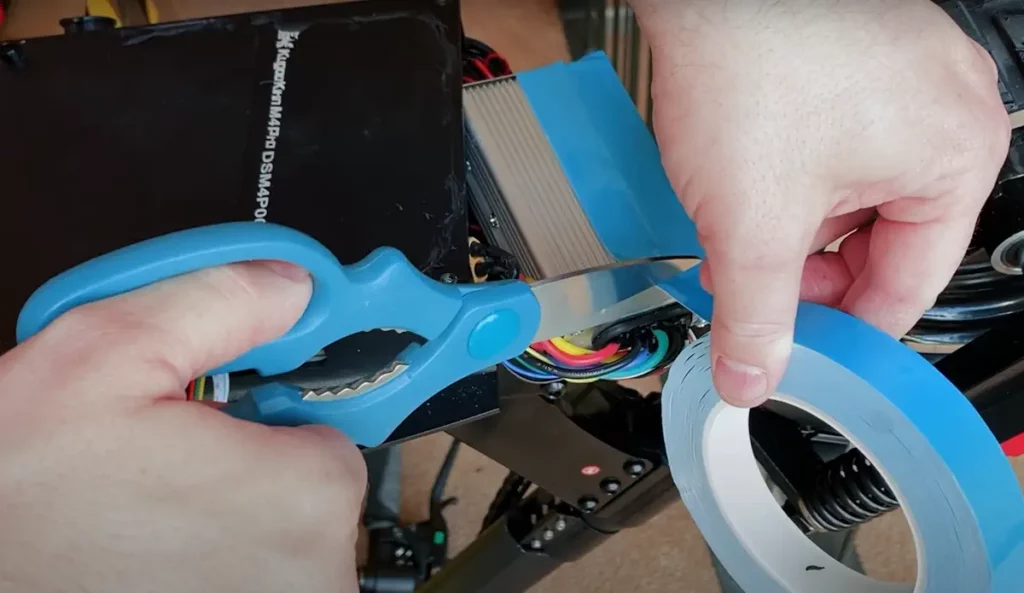In this article, I will shed light on some of the most common electric scooter mistakes that both myself and other experienced riders have made over the years.
In the guide below, we will go over each of these mistakes in detail, and what you can do to address them.
 Buying an electric scooter without proper researchRisk: Incompatible features, safety issuesCost: Higher repairDifficulty: ModerateConduct thorough research before purchasing an electric scooter to ensure it meets your needs and safety standards.
Buying an electric scooter without proper researchRisk: Incompatible features, safety issuesCost: Higher repairDifficulty: ModerateConduct thorough research before purchasing an electric scooter to ensure it meets your needs and safety standards. Skipping on safety gearRisk: Injuries, accidentsCost: Medical bills, repairsDifficulty: EasyPrioritize safety by investing in high-quality protective gear, such as a helmet, knee pads, and elbow pads, to minimize the risk of injuries.
Skipping on safety gearRisk: Injuries, accidentsCost: Medical bills, repairsDifficulty: EasyPrioritize safety by investing in high-quality protective gear, such as a helmet, knee pads, and elbow pads, to minimize the risk of injuries. Overloading the electric scooterRisk: Performance issues, damageCost: Repairs, replacementDifficulty: EasyAvoid overloading your electric scooter to maintain optimal performance and prevent damage to the vehicle.
Overloading the electric scooterRisk: Performance issues, damageCost: Repairs, replacementDifficulty: EasyAvoid overloading your electric scooter to maintain optimal performance and prevent damage to the vehicle.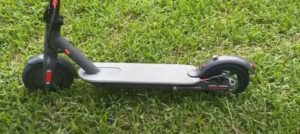 Riding in restricted areasRisk: Fines, legal consequencesCost: Fines, legal feesDifficulty: EasyRespect local laws and regulations by refraining from riding in restricted areas, ensuring a smoother and lawful riding experience.
Riding in restricted areasRisk: Fines, legal consequencesCost: Fines, legal feesDifficulty: EasyRespect local laws and regulations by refraining from riding in restricted areas, ensuring a smoother and lawful riding experience. Neglecting maintenanceRisk: Breakdowns, safety hazardsCost: Repairs, replacementsDifficulty: ModerateImplement a regular maintenance schedule to keep your electric scooter in optimal condition, preventing unexpected breakdowns and ensuring longevity.
Neglecting maintenanceRisk: Breakdowns, safety hazardsCost: Repairs, replacementsDifficulty: ModerateImplement a regular maintenance schedule to keep your electric scooter in optimal condition, preventing unexpected breakdowns and ensuring longevity.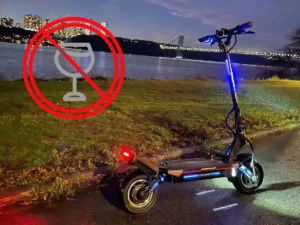 Riding under influenceRisk: Accidents, legal consequencesCost: Fines, legal feesDifficulty: Difficult (avoidable)Refrain from riding under the influence of alcohol or substances, prioritizing a clear and focused state of mind for safe commuting.
Riding under influenceRisk: Accidents, legal consequencesCost: Fines, legal feesDifficulty: Difficult (avoidable)Refrain from riding under the influence of alcohol or substances, prioritizing a clear and focused state of mind for safe commuting.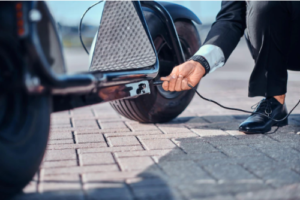 Overnight charging (for older models)Risk: Battery degradation, safety hazardsCost: Battery replacementDifficulty: EasyFor older models, avoid overnight charging to prevent battery degradation and potential safety hazards.
Overnight charging (for older models)Risk: Battery degradation, safety hazardsCost: Battery replacementDifficulty: EasyFor older models, avoid overnight charging to prevent battery degradation and potential safety hazards. Not researching local laws and regulationsRisk: Legal consequencesCost: Fines, legal feesDifficulty: EasyFamiliarize yourself with local traffic laws and regulations to ensure a safe and legal riding experience.
Not researching local laws and regulationsRisk: Legal consequencesCost: Fines, legal feesDifficulty: EasyFamiliarize yourself with local traffic laws and regulations to ensure a safe and legal riding experience. Riding at top speedRisk: Accidents, loss of controlCost: Medical bills, repairsDifficulty: ModerateRide at a reasonable speed, considering road conditions, traffic, and your skill level, to reduce the risk of accidents.
Riding at top speedRisk: Accidents, loss of controlCost: Medical bills, repairsDifficulty: ModerateRide at a reasonable speed, considering road conditions, traffic, and your skill level, to reduce the risk of accidents.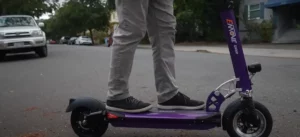 Not having the proper stanceRisk: Lack of control, accidentsCost: Medical bills, repairsDifficulty: EasyMaintain a proper riding stance for stability and control, enhancing your overall safety while operating the electric scooter.
Not having the proper stanceRisk: Lack of control, accidentsCost: Medical bills, repairsDifficulty: EasyMaintain a proper riding stance for stability and control, enhancing your overall safety while operating the electric scooter. Improper storageRisk: Damage, theftCost: Repairs, replacementDifficulty: EasyStore your electric scooter in a secure and dry location to prevent damage from weather or theft.
Improper storageRisk: Damage, theftCost: Repairs, replacementDifficulty: EasyStore your electric scooter in a secure and dry location to prevent damage from weather or theft.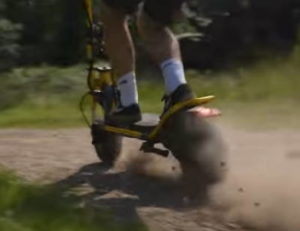 Riding on overly challenging terrainRisk: Accidents, damageCost: Repairs, replacementDifficulty: ModerateAvoid overly challenging terrain that may strain the scooter’s capabilities and compromise your safety.
Riding on overly challenging terrainRisk: Accidents, damageCost: Repairs, replacementDifficulty: ModerateAvoid overly challenging terrain that may strain the scooter’s capabilities and compromise your safety. Exposing the scooter to wet or extreme weatherRisk: Electrical damage, accidentsCost: Repairs, replacementDifficulty: ModerateShield your electric scooter from wet or extreme weather conditions to prevent damage to electrical components and ensure safe operation.
Exposing the scooter to wet or extreme weatherRisk: Electrical damage, accidentsCost: Repairs, replacementDifficulty: ModerateShield your electric scooter from wet or extreme weather conditions to prevent damage to electrical components and ensure safe operation. Riding your electric scooter with someone elseRisk: Loss of control, accidentsCost: Medical bills, repairsDifficulty: ModerateRide solo to maintain better control and stability, avoiding potential accidents that may arise from carrying a passenger.
Riding your electric scooter with someone elseRisk: Loss of control, accidentsCost: Medical bills, repairsDifficulty: ModerateRide solo to maintain better control and stability, avoiding potential accidents that may arise from carrying a passenger. Not being aware and alertRisk: Accidents, collisionsCost: Medical bills, repairsDifficulty: EasyStay alert and aware of your surroundings while riding, minimizing the risk of collisions or other accidents.
Not being aware and alertRisk: Accidents, collisionsCost: Medical bills, repairsDifficulty: EasyStay alert and aware of your surroundings while riding, minimizing the risk of collisions or other accidents.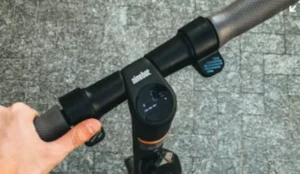 Riding with one handRisk: Lack of control, accidentsCost: Medical bills, repairsDifficulty: ModerateAlways use both hands when riding to ensure proper control and responsiveness of the electric scooter.
Riding with one handRisk: Lack of control, accidentsCost: Medical bills, repairsDifficulty: ModerateAlways use both hands when riding to ensure proper control and responsiveness of the electric scooter.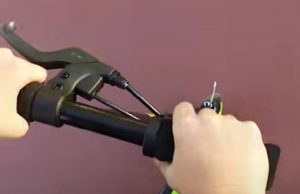 Braking poorlyRisk: Accidents, loss of controlCost: Medical bills, repairsDifficulty: ModeratePractice effective braking techniques, gradually and evenly applying the brakes to maintain control and prevent abrupt stops.
Braking poorlyRisk: Accidents, loss of controlCost: Medical bills, repairsDifficulty: ModeratePractice effective braking techniques, gradually and evenly applying the brakes to maintain control and prevent abrupt stops.
Buying an electric scooter without proper research

One of the first and most major electric scooter mistakes people make is buying one without proper research. Ending up with an electric scooter that doesn’t meet your needs and preferences can be disappointing. Not to mention you may end up paying for a high-end scooter when a cheaper model would’ve done you just fine.
To avoid this mistake, think of what you’re mostly going to use the electric scooter for. No use in overspending on a high-powered scooter if all you need is something for daily commuting. Similarly, a daily commuting scooter may not be what you’re looking for if you want to ride on rough and off-road terrains.
You should also research the different models available in the market that suit your requirements and read their user reviews. After shortlisting your options according to your requirements and budget, you’ll have a clearer idea of what electric scooter to go for.
For more guidance, see my complete electric scooter buying guide, where I go over each and every point you should consider.
Skipping on safety gear
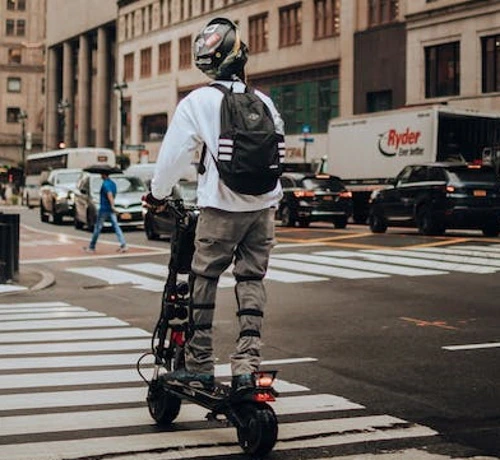
It’s common for riders to underestimate the potential risks that associated riding an electric scooter. A study documented 249 E.R. patients with injuries from electric scooter accidents in a span of a year. Only 4.4% of those riders wore helmets, and 40.2% suffered from head injuries.
An electric scooter accident may seem unlikely, but even one crash or fall is enough to do irreversible harm.
Helmets, elbow and knee pads are necessary for every electric scooter rider. Make sure you are dressed properly for riding your scooter and have appropriate footwear to protect your feet and help you maintain a proper stance for the stability, balance, and control of your scooter. If you plan on riding at night, put on a reflective vest to be more visible to other vehicles passing by.
Also, make sure to go over my complete guide on electric scooter safety, as I’ve made every possible mistake in the book, and there are a lot of things you need to be aware of.
Overloading the electric scooter

An electric scooter’s performance is considerably affected by the weight it’s made to carry. While a light backpack on your back won’t do much harm, electric scooters aren’t exactly great for carrying large equipment or packages.
To prevent overloading, go through my guide on electric scooter weight limits or consult your electric scooter’s user manual to know how much weight it can handle before it starts compromising on performance. Make sure any extra weight you might have to pull is within the limit. If carrying heavy baggage is something you can’t avoid, I suggest getting an electric scooter that can handle more weight, e.g. electric scooters for heavy adults, off road electric scooters, etc.
Riding in restricted areas
You can’t just ride your electric scooter wherever you want. The commonly restricted areas for the vehicle include pedestrian-only zones, sidewalks, some roads, etc. This is mainly to protect you and other pedestrians around you. Riding in these areas has resulted in fatal accidents, so it isn’t something to take lightly.
Get familiar with your city’s electric scooter-permitted roads and paths to plan routes accordingly. Respect pedestrian zones and private properties by sticking to bike lanes and keep an eye out for any signs indicating riding electric scooters in that area is restricted.
Lastly, plan your route ahead of the ride and use mobile apps highlighting electric scooter-friendly paths.
Neglecting maintenance
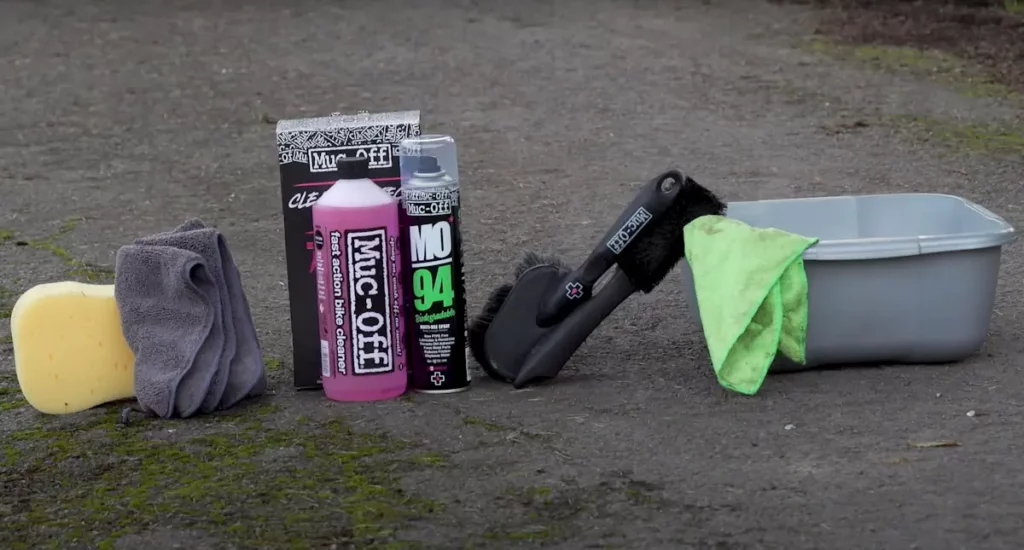
It’s easy to get lazy when it comes to maintaining and cleaning your electric scooter, but things can get pretty bad if you don’t take care of it. If you ride your electric scooter daily, I recommend cleaning it with a damp microfiber cloth and light soap at least once a week.
This will help you spot any signs of damage that must be taken care of before they escalate into something worse. Maintenance for your electric scooter also includes lubricating its rotating parts, ensuring all the screws are tight and not corroded, checking the main parts, etc.
Riding under influence
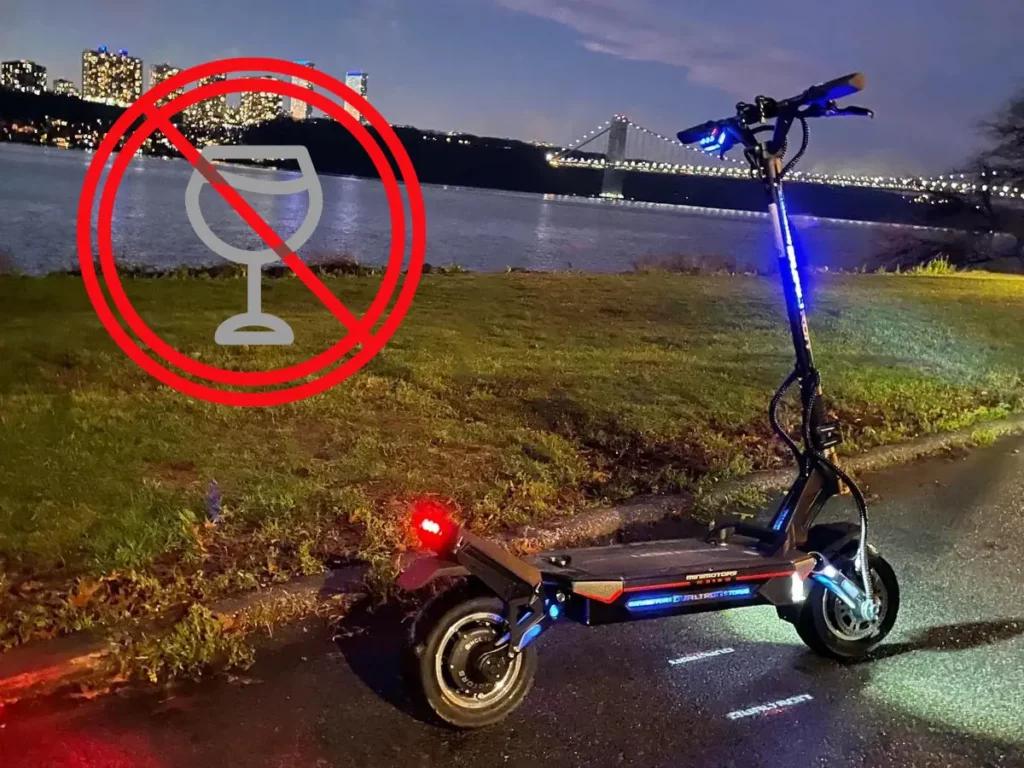
Just because you don’t need a license to ride an electric scooter, doesn’t make the vehicle safe to ride under the influence of drugs or alcohol. In most cities, you’ll face a DUI charge and can also get arrested if you’re caught.
Even low BACs have been found to reduce a rider’s performance on an electric scooter, putting their safety at risk. So, your best bet is to completely avoid riding your e-scooter when you’re under the influence. Instead, hail a cab or ask a friend for a ride.
Overnight charging (for older models)
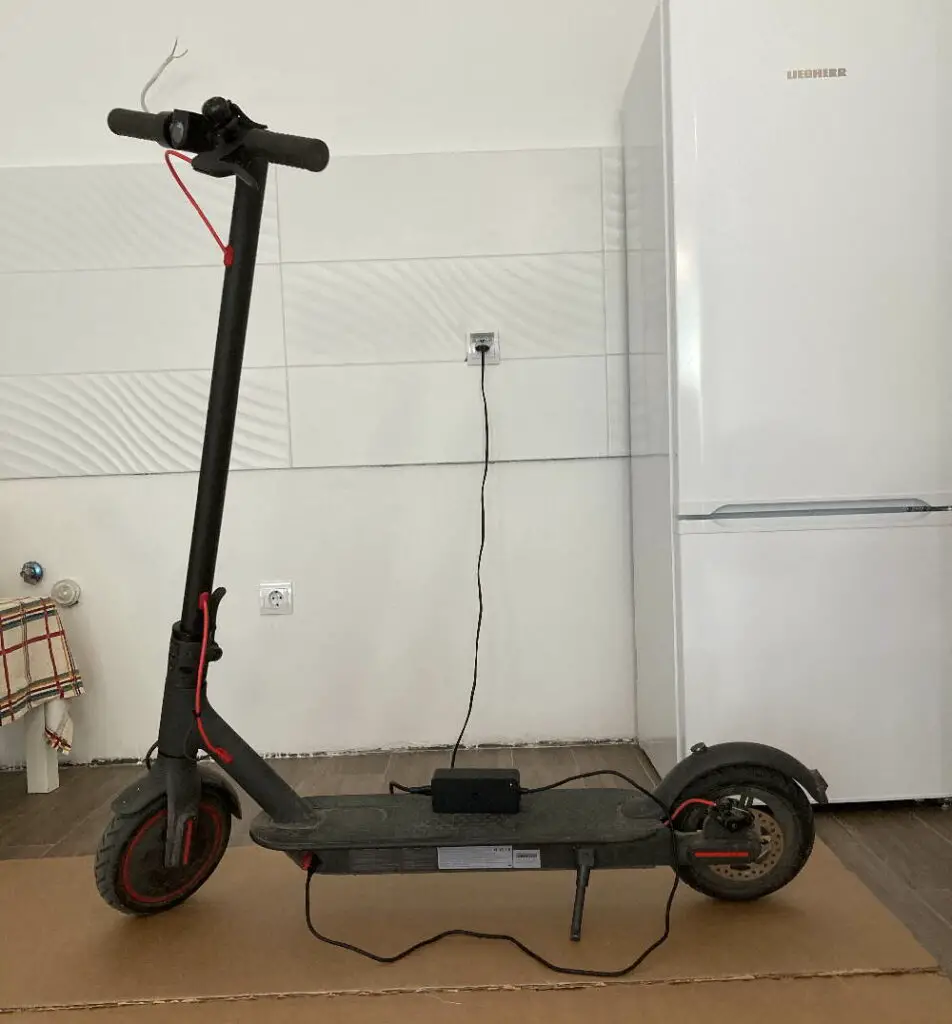
Who doesn’t find overnight charging convenient?
The problem is that charging overnight usually means you’ll only turn off the switch when you wake up. The electric scooter can overcharge at that time, and while that may not be a problem once in a while, you shouldn’t do it regularly.
You won’t notice it immediately, but the bad charging habit will eventually decrease the lifespan of your electric scooter.
To be fair though, this is mostly a problem for older scooter models, especially ones with sealed-lead-acid batteries.
The best way to manage this problem is to get an electric scooter with an integrated battery management system. A battery management system will prevent the scooter’s battery from overcharging and overheating. If your battery doesn’t have one, I suggest taking more care to avoid overcharging.
Not researching local laws and regulations
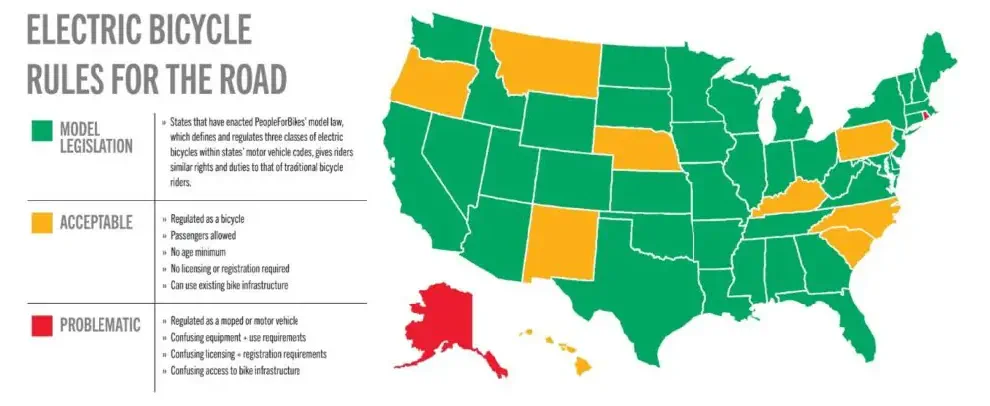
The local laws and regulations regarding electric scooters differ depending on your city and state. While some countries still haven’t made laws regarding electric scooters, others are pretty strict in their enforcement.
Laws for electric scooters can differ in terms of age limit, restricted areas, the requirement of a license, etc.
So, it’s always a good idea to research the electric scooter laws of where you live or plan to travel.
Riding at top speed
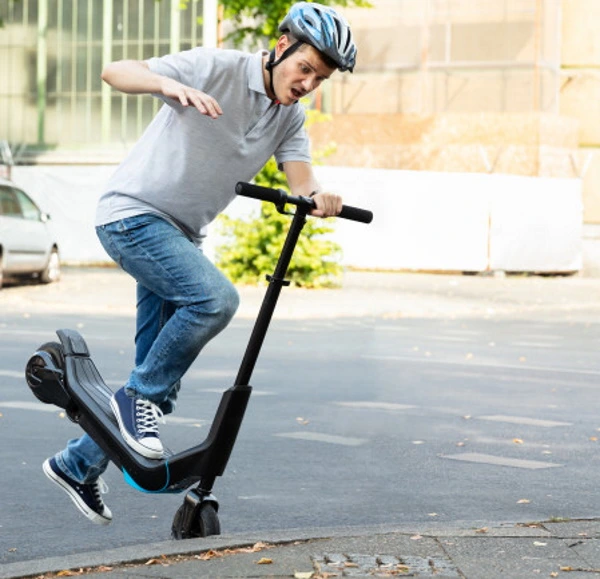
Riding an electric scooter at top speed can be tempting.
While there are many fast electric scooters available in the market, it’s almost never recommended to ride them at top speed. When riding at high speed, if your scooter hits even the smallest obstacle, it will most likely destabilize and crash.
It will be difficult to notice road hazards like potholes and construction signs. This will put your safety at risk, especially because you won’t be able to brake fast enough. Plus, you might even get fined for exceeding the speed limit if you’re caught. The best way to avoid this is to always know and adhere speed limits of the paths and areas you’re riding your electric scooter in.
Not having the proper stance
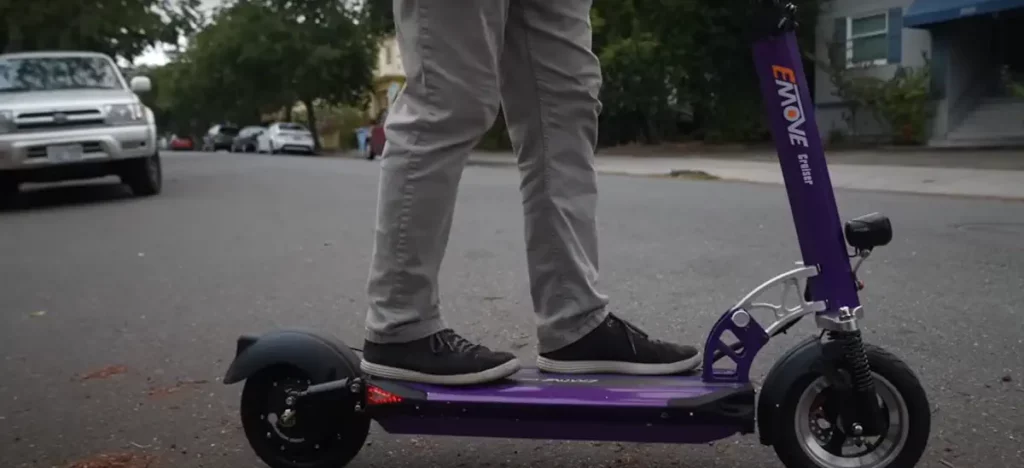
The posture and stance with which you ride an electric scooter can widely affect the balance and maneuverability of the vehicle. As a beginner, knowing the most optimal way to ride an electric scooter is important to ensure the ride is comfortable and you’re getting the most out of it.
The first position riders tend to go with is placing their feet parallel and next to each other on the footboard. However, with this position, you’ll most likely lose control and stability when you brake harder or accelerate quickly.
In my experience, the best way is to have both feet on the footboard with one foot in front of the other. This way your weight is evenly distributed on the scooter, so you can handle bumps and braking more easily. You’ll be able to easily shift backwards to brake and won’t have a problem shifting forward to steer either.
Check out my guide on the best electric scooter tips, it includes advice on the proper riding stance and tactics, as well as other useful riding tips.
Improper storage
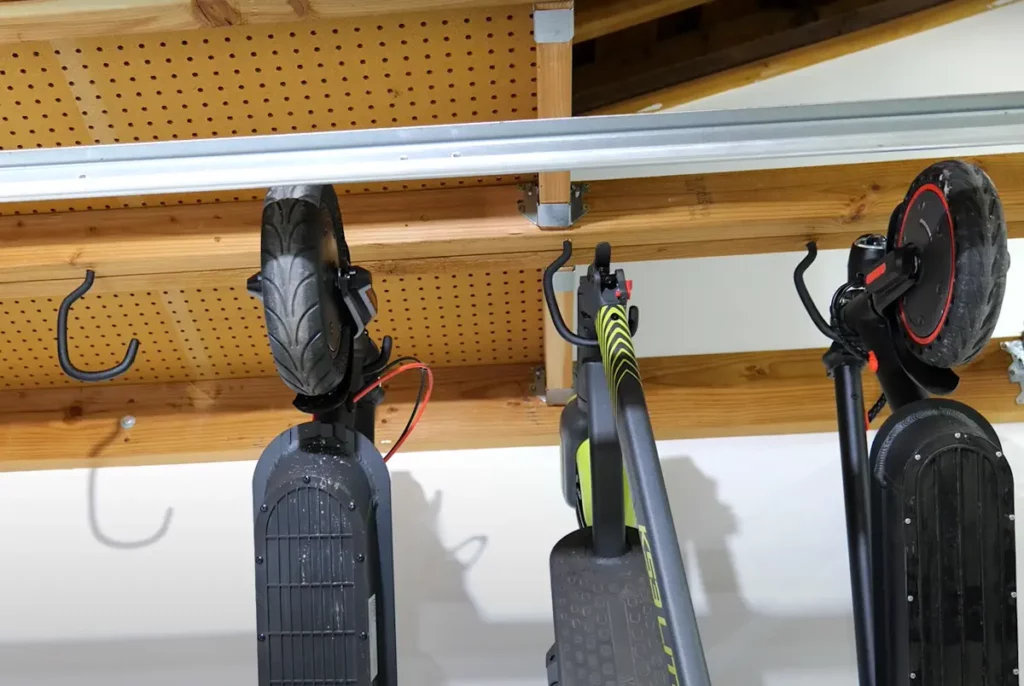
One of the most common electric scooter mistakes riders make is not storing them properly. Improper storage can result in damage, reduced performance, and even theft. If you don’t regularly check on your stored electric scooter, dust and moisture accumulation go unnoticed, and the damage spreads over time.
Similarly, improperly storing the scooter’s lithium-ion battery will speed up its degradation process, and you’ll have to pay for a replacement.
To avoid having to pay expensive replacement and repair costs, always store your electric scooter in a dry place indoors, enclosed in a waterproof bag or cover, and locked with a proper scooter lock that fits it. For long-term storage, I recommend cleaning and doing a maintenance check on your electric scooter before you put it away. This will help you repair any damage beforehand, and you’ll get a perfectly working scooter when you decide to take it out again.
Store the battery separately and store it somewhere you can easily monitor its charge percentage. To prolong its lifespan, ensure the battery level doesn’t fall below 20%.
Riding on overly challenging terrain

Different types of electric scooters are designed for different purposes. For example, simple commute scooters have average-powered motors and batteries, which aren’t enough for riding on challenging off-road grounds, climbing hills, steep terrains. etc. So, if you ride your electric scooter on an over-challenging terrain that it isn’t designed for, you’ll risk your motor overworking and breaking down.
You can avoid this mistake by analyzing what type of terrain you’ll mostly be riding. A basic electric scooter is fine for simple commuting, but if you want something for tough and steep terrains that can handle more weight, it’s better to invest in one of the higher-powered electric scooters.
If your environment has a lot of hills, take a look at my guide on the best electric scooters for climbing hills.
If you want to have a bit more fun with your scooter and take it out in nature for some adrenaline-filled rides, then see my guide on the best off-road electric scooters.
It’s also worth considering the road condition and infrastructure of the city you live in. If the roads in your area are poor, and you or people you know have experienced lots of flats on either scooters or bikes, then you’ll want to get a solid-tire scooter to avoid flats altogether.
Exposing the scooter to wet or extreme weather
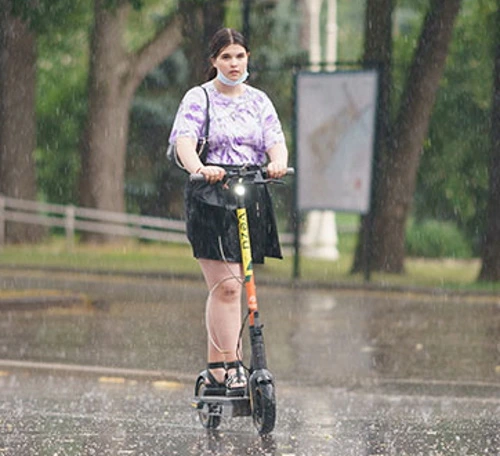
Both extreme hot and cold weather can negatively affect your electric scooter, specifically, its battery. The battery can overheat if your electric scooter is exposed to sunlight for too long. Riding in extremely cold temperatures, on the other hand, utilizes more battery because the cold slows down its lithium-ion reactions.
Another common thing you find riders doing is riding in the rain. This can not only damage the electrical components of the vehicle but also put your safety at risk. Riding in the rain reduces traction and visibility, increasing the chances of collisions and accidents.
Try to avoid riding in extreme conditions. If you must, ensure the battery is protected. Use proper rain gear for riding in the rain, and dry your electric scooter thoroughly after the ride.
If you often have to ride in the rain, check out my guide on the best waterproof electric scooters. If you live somewhere with lots of snow, check out my guide on the best winter scooters.
If, on the other hand, you live somewhere hot, see my guide on the best electric scooters for summer and hot weather.
Riding your electric scooter with someone else
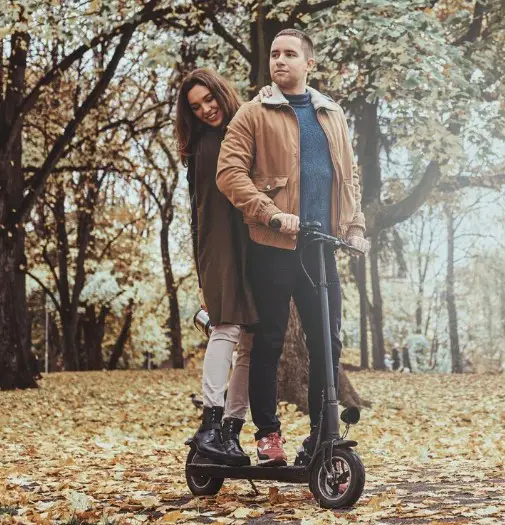
One of the most important safety rules of electric scooters is that you shouldn’t ride together with someone else.
Doing so drastically increases the risk of damaging the scooter, or any or both of you getting injured.
Trust me, just avoid doing this (it’s not that fun anyway).
Not being aware and alert

This is an electric scooter mistake I see happening a lot these days. Riders cruise around, lost in their ownworld, vibing to music playing through their earphones.
Looks cool, but the carefree approach can quickly make things go sideways.
You’ll fail to notice potholes, pedestrians, or any other obstacles in the way. By the time you do notice, it’ll be too late. A split-second delay in response can result in a severe accident or fall.
Prevent this from happening by prioritizing your focus on the road and your surroundings. Refrain from using your phone, listening to music, or doing anything else that can hinder your awareness and senses. Constantly scan the road for any obstacles and always ride a safe distance away from other vehicles.
Riding with one hand

Once you get the hang of riding an electric scooter, the confidence may make you think that you don’t need to be as cautious as you were as a beginner. You often see riders steering with one hand while holding something in the other. That makes it difficult to brake quickly in case of an emergency.
A friend of mine would often do this with one hand holding a cup of coffee. It was actually pretty impressive until he almost crashed into a pedestrian (he fell, but thankfully, he and the pedestrian weren’t hurt badly).
To solve this, you should get a small basket or cupholder to hold onto your things. You can even add a hook to carry bags. My guide on the best electric scooter accessories covers every possible scooter upgrade and customization, so check it out if you’re interested in that.
Just make sure you don’t carry anything heavy enough to weigh the scooter down.
Braking poorly
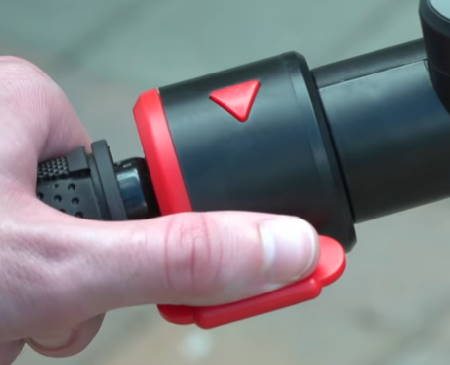
Not knowing when or how hard to brake can result in deadly crashes and accidents.
The stopping distance can be different for various electric scooters and braking techniques. A poor hold on the braking technique of your scooter means you won’t be able to avoid obstacles on time or respond to unexpected situations.
If you’re a beginner and haven’t ridden your electric scooter a lot yet, I recommend you find an empty parking lot or ground to practice your braking technique. Practice emergency braking and try to get the hang of your scooter’s braking system.
Another common electric scooter mistake beginners make is trying to brake by pushing down on the rear mudguard. The mudguard only serves to protect your legs from dirt and water, so avoid using it as a brake (unless your scooter has the rear-fender braking feature).
See my guide on electric scooter brakes to learn everything you need to know about braking.
Here’s a reminder list of common electric scooter mistakes you should avoid to protect yourself, those around you, and your electric scooter:
- Buying an electric scooter without proper research on what models and features will meet your needs best
- Not wearing safety gear and risking accidents
- Overloading the scooter and risking breaking it down
- Riding in restricted areas, putting yourself and passing pedestrians in danger
- Being lazy about your scooter’s maintenance and delaying it
- Riding under the influence of alcohol or drugs
- Overcharging your scooter by charging it overnight (for older scooters)
- Not educating yourself about local electric scooter laws and regulations
- Risking the control and stability of your electric scooter by riding recklessly
- Riding with an uncomfortable and improper stance that messes with how you control the e-scooter
- Storing the electric scooter improperly when putting it away for a long time
- Riding on terrains more challenging than what your electric scooter is designed for
- Riding your electric scooter in wet or extreme weather conditions
- Riding together with someone else
- Not being aware of your surroundings and instead being immersed in your thoughts
- Keeping only one hand on the handlebar
- Not knowing how to brake properly



